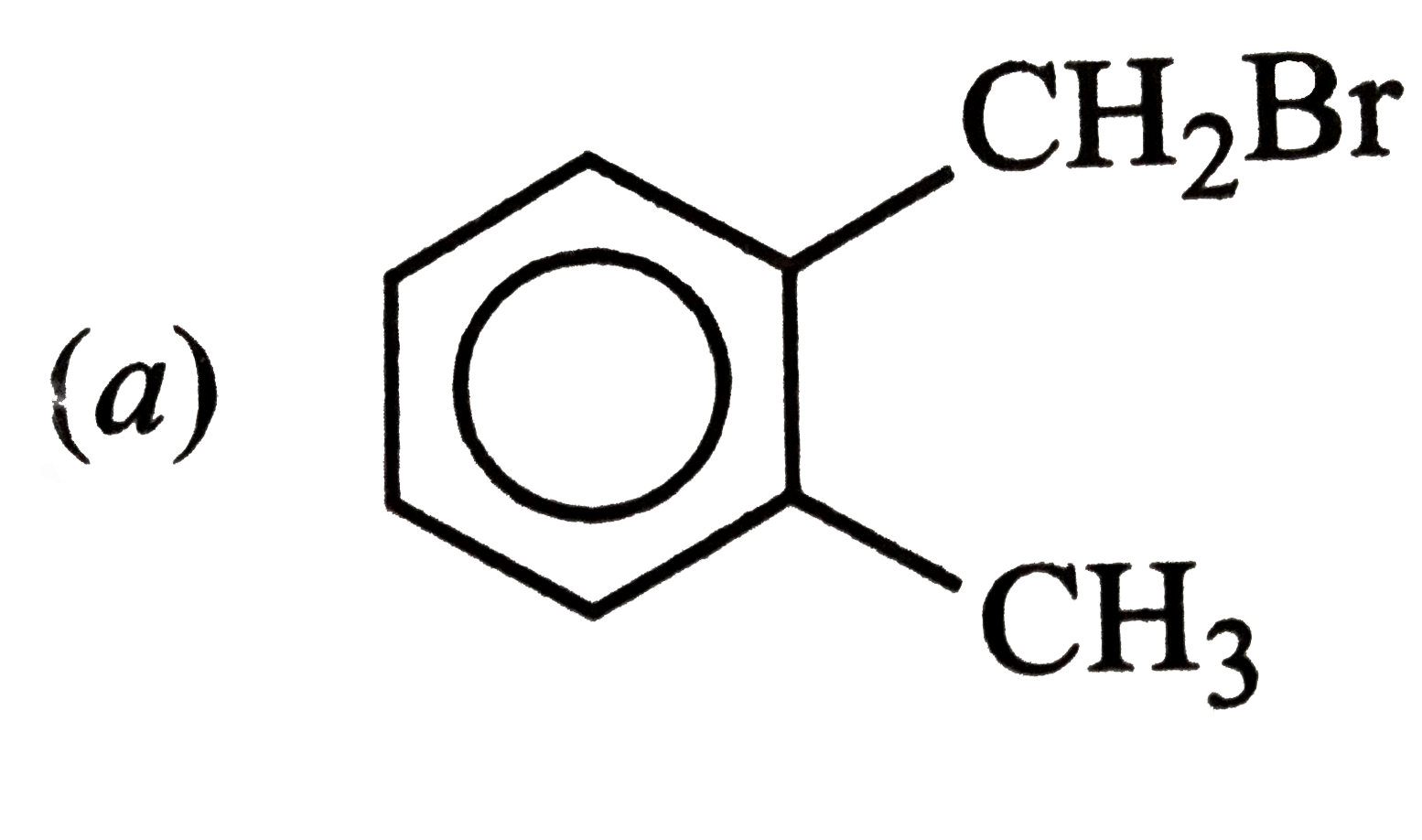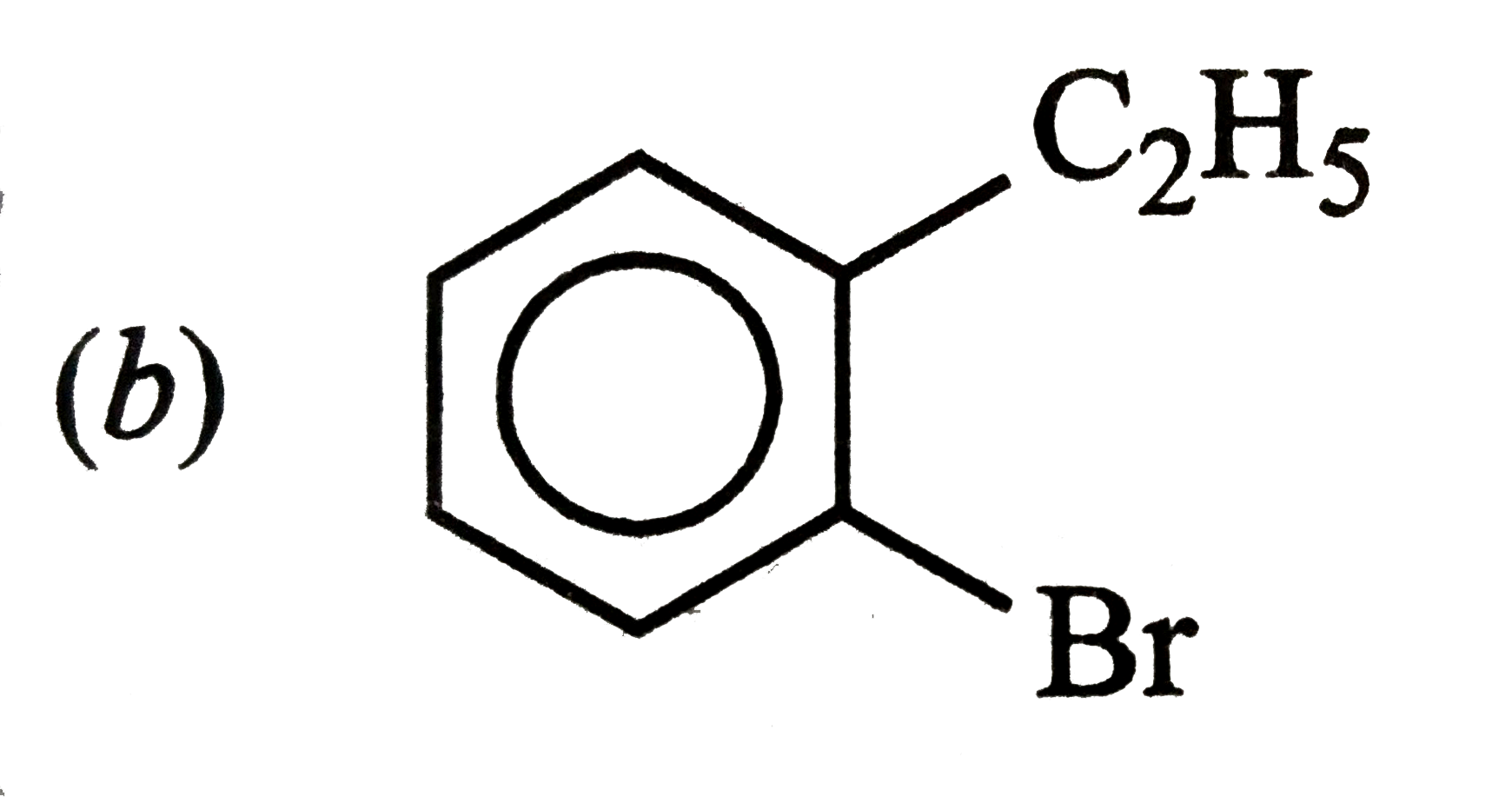Compound (A) and (B) are isomers having C8H10. On oxidation (A) gives benzoic acid while (B) gives phthalic acid which forms an anhydride (C) on heating. Identify (A), (B) and (C).
To solve the problem, we need to identify the compounds (A), (B), and (C) based on the given information. Let's break it down step by step.
Step 1: Understanding the molecular formula
The compounds (A) and (B) have the molecular formula C₈H₁₀. This means they both contain 8 carbon atoms and 10 hydrogen atoms. Since they are isomers, they will have different structural arrangements.
Hint: Isomers have the same molecular formula but different structures.
Step 2: Analyzing the oxidation products
- When compound (A) is oxidized, it gives benzoic acid (C₇H₆O₂).
- When compound (B) is oxidized, it gives phthalic acid (C₈H₆O₄).
Hint: The oxidation products can provide clues about the structure of the original compounds.
Step 3: Identifying compound (A)
Since (A) gives benzoic acid upon oxidation, it must contain a structure that allows for the formation of a carboxylic acid. The simplest compound that fits this description and has the formula C₈H₁₀ is ethylbenzene (C₆H₅-CH₂-CH₃). When ethylbenzene is oxidized, it forms benzoic acid.
Conclusion for (A): Compound (A) is ethylbenzene.
Step 4: Identifying compound (B)
Compound (B) gives phthalic acid upon oxidation. Phthalic acid is a dicarboxylic acid with the formula C₈H₆O₄, and it is derived from 1,2-dimethylbenzene (also known as ortho-xylene). The structure of 1,2-dimethylbenzene allows for the formation of two carboxylic acid groups when oxidized.
Conclusion for (B): Compound (B) is 1,2-dimethylbenzene (ortho-xylene).
Step 5: Identifying compound (C)
When phthalic acid (B) is heated, it forms an anhydride. The anhydride formed from phthalic acid is called phthalic anhydride. The reaction involves the loss of a water molecule.
Conclusion for (C): Compound (C) is phthalic anhydride.
Final Summary
- Compound (A) is ethylbenzene (C₆H₅-CH₂-CH₃).
- Compound (B) is 1,2-dimethylbenzene (ortho-xylene).
- Compound (C) is phthalic anhydride.
The compounds (A) and (B) have the molecular formula C₈H₁₀. This means they both contain 8 carbon atoms and 10 hydrogen atoms. Since they are isomers, they will have different structural arrangements.
- When compound (A) is oxidized, it gives benzoic acid (C₇H₆O₂).
- When compound (B) is oxidized, it gives phthalic acid (C₈H₆O₄).
Since (A) gives benzoic acid upon oxidation, it must contain a structure that allows for the formation of a carboxylic acid. The simplest compound that fits this description and has the formula C₈H₁₀ is ethylbenzene (C₆H₅-CH₂-CH₃). When ethylbenzene is oxidized, it forms benzoic acid.
Compound (B) gives phthalic acid upon oxidation. Phthalic acid is a dicarboxylic acid with the formula C₈H₆O₄, and it is derived from 1,2-dimethylbenzene (also known as ortho-xylene). The structure of 1,2-dimethylbenzene allows for the formation of two carboxylic acid groups when oxidized.
When phthalic acid (B) is heated, it forms an anhydride. The anhydride formed from phthalic acid is called phthalic anhydride. The reaction involves the loss of a water molecule.
- Compound (A) is ethylbenzene (C₆H₅-CH₂-CH₃).
- Compound (B) is 1,2-dimethylbenzene (ortho-xylene).
- Compound (C) is phthalic anhydride.
Topper's Solved these Questions
Similar Questions
Two isomeric compounds(A) and (B) have molecular formula C6H10. Oxidation of (A) gives mixture of butanoic and acetic acids, whereas compound (B) gives hexa-1,6-dioicacid. What are (A) and (B)?
View SolutionCompound (A) ,C8H9Br gives a white precipitate when warmed with alcoholic AgNO3 Oxidation of (A) gives an acid (B) C8H6O4 (B) easily forms anhydride on heating Identify the compound (A)
View Solution
Knowledge Check
- Question 1 - Select One
Which of the following compounds on oxidation gives benzoic acid ?
AChlorophenolBChlorotolueneCChlorobenzeneDBenzyl chloride - Question 2 - Select One
Which of the following compounds on oxidation gives benzoic acid?
AChlorophenolBChlorotolueneCChlorobenzeneDBenzyl chloride - Question 3 - Select One
Compound (A) ,C8H9Br gives a white precipitate when warmed with alcoholic AgNO3 Oxidation of (A) gives an acid (B) C8H6O4 (B) easily forms anhydride on heating Identify the compound (A)
A B
B C
C D
D
Compound (A) C8H9Br, gives a white precipitate when warmed with alcoholic AgNO3. Oxidation of (A) gives an acid (B),C8H6O4. (B) easily forms anhydride on heating. Identify the compound (A)
View SolutionCompound (A), C8H9Br, gives a white precipitate when warmed with alcoholic AgNO3 . Oxidation of (A) gives an acid (B), C8H6O4 . (B) easily forms anhydride on heating. identify the compound (A).
View SolutionCompound (A) ,C8H9Br gives a white precipitate when warmed with alcoholic AgNO3 Oxidation of (A) gives an acid (B) C8H6O4 (B) easily forms anhydride on heating Identify the compound (A)
View SolutionCompound (A), C6H3Br, gives a white precipitate when warmed with alcoholic AgNO3. Oxidation of (A) gives an acid (B). C6H3O4. (B) easily forms anhydride on on heating. Identify the compound (A).
View SolutionWhen compound A (C8H9CI) is treated with alcoholic AgNO3, a white precipitate is formed .Oxidation of (A) gives an acid (B), C8H6O4. (B) easily forms anhydride on heating.ldentify the compound (A).
View Solution
